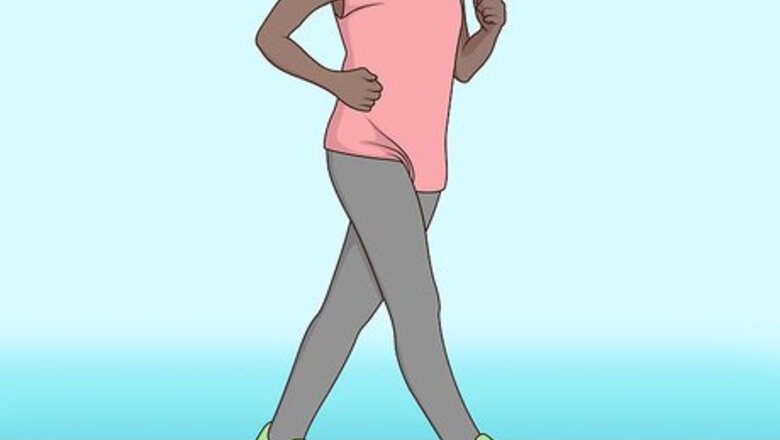
views
Adjusting to Hotter Weather
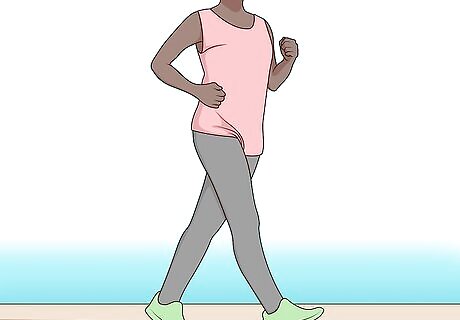
Start with light recreational activities. When you’re first getting used to the heat, it’s best to take things nice and easy until you know how you’ll respond. Go for a brisk walk, toss a football around or take care of a little yard work. Just be careful not to overdo it—being out for too long can quickly leave you feeling drained. You may not be ready to jump right into your normal routine if you’ve recently relocated somewhere warmer. Head out in the early part of the day while it’s still tolerable and let yourself warm up with the weather. Try to avoid any strenuous activity during the heat of the day. If you want to do more intense workouts, stick to exercising in the morning or evening when temperatures are lower.
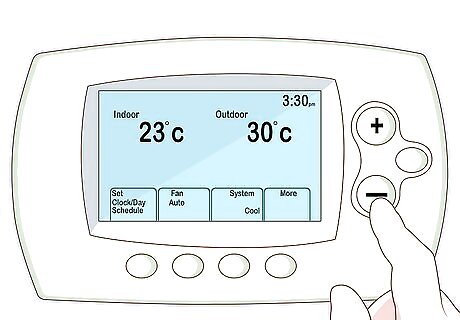
Turn down the air conditioner. Try dropping your thermostat 1-2 degrees every day for a couple of weeks. This will help make your conditions inside more like the ones outside. With constant exposure to above-average temperatures, your body will have no choice but to adapt. As a general goal, your thermostat should be set no more than about 10 degrees cooler than the temperature outside once you’ve reached peak acclimation. Your progress will be much slower if you constantly rely on air conditioning to cool yourself off. It will also be more difficult to adjust to the heat when you’re switching between cold indoor and hot outdoor temperatures.

Prepare yourself mentally. Before you step outside, drink at least 12 ounces of cold water to make sure you're starting off properly hydrated. Take a few deep breaths to calm your nerves, and get ready to sweat. Sweltering heat is uncomfortable no matter how you look at it. The sooner you make peace with your environment, the better equipped you’ll be to deal with it. Be patient. Getting used to any change in temperature just takes time.
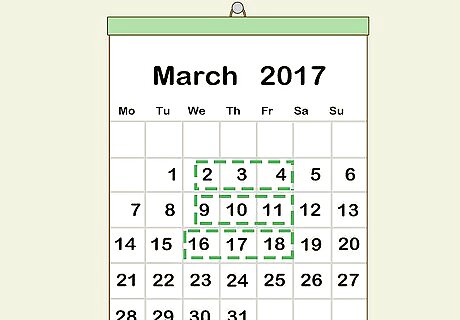
Keep up your momentum. It only takes about one week for you to start feeling the loss of the physiological changes you worked so hard for. To maintain your acclimated state, you’ll need to continue to brave the heat at least every other day. Once it’s gone, you’ll have to start all over again to get it back. Keep up a regular schedule of outdoor activity or exercise in the morning and evening. For best results, aim for at least 2-3 days a week.
Being Active in the Heat
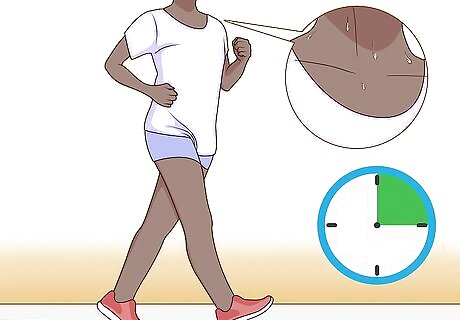
Perform small bursts of activity. When you’re first getting acclimated to working out outdoors, it’s best to start with roughly 15 minutes of moderate exercise at a time. As your conditioning improves, you can begin to add 2-3 minutes to each session. Take plenty of rest breaks and be careful not to try to do too much too soon. Pay close attention to how you feel after each period of activity. If you detect that your performance is dropping off, play it safe and decrease your intensity or take longer breaks. It typically takes about two weeks for the average person to become heating acclimatized.

Drink plenty of water. Fill up on cold water before you set out to bike, hike, or jog, and plan for frequent hydration stops along the way. Keeping your tissues flushed with water is crucial if you’re going to be slogging it out in stifling conditions—elevated temperatures will cause you to sweat constantly, even when you’re not actively exerting yourself. Dehydration can be deceptive. Replenish your fluid levels at regular intervals, whether you feel thirsty or not. Always carry a water bottle with you or make sure there’s another available source of water nearby. Try room temperature water since it’s the best for your body. Avoid drinking hot liquids since they will make you feel warmer. Sports drinks not only replenish fluids, but they also have essential electrolytes which are needed to power your muscles through a workout.
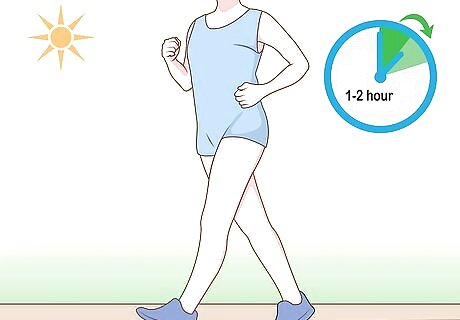
Increase the amount of time you spend outside gradually. After your first couple of weeks in a new environment, crank up the duration of your activity to around an hour at a time. This will soon become easier, and you can begin spending even longer periods outdoors. If your goal is to acclimatize as quickly as possible, plan on building up to least two hours a day. Once you’re able to comfortably stay out for two or more hours a day, you’ll begin to feel much more at ease in motion and at rest. Raise your tolerance by finding an area with some light shade or stripping off non-essential items of clothing rather than seeking refuge indoors.
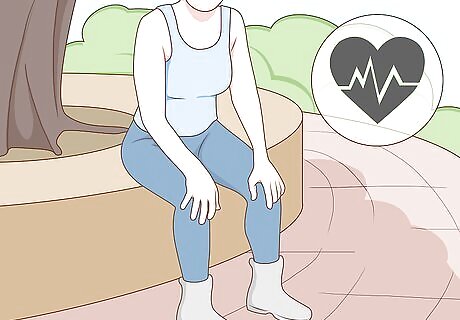
Don’t exceed your limits. Monitor your heart rate and breathing patterns vigilantly and be ready to call it a day if they start getting out of control. Even if you’re an elite athlete, there will come a point when your body can no longer keep up with the demands of working out in the heat. At this point, your continued efforts can go from difficult to dangerous. Listen to your body, not your exercise journal. Stop what you're doing and seek out a shady place to rest when you feel the heat getting to you, even if you haven't finished your session. Consider splitting your workouts up into multiple short sessions to reduce your risk of overheating.
Staying Safe and Healthy

Wear lightweight clothing. Stick to short-sleeved items like t-shirts, shorts, tank tops, and moisture-wicking activewear until you’ve built up an immunity to the heat. Pieces with loosely-woven materials and more relaxed fits are also preferable, as they’ll allow your skin to breathe. Whatever you wear, it’s important that it be properly ventilated to release heat rather than trapping it close to your body. Choose light-colored garments over darker ones. Lighter colors reflect the sun’s rays, which cuts down on how much heat they hold, whereas dark colors absorb it.

Replace lost nutrients with food. Load up on foods that contain beneficial electrolytes and key vitamins and minerals before and after venturing outdoors. Fruits and vegetables like bananas, spinach, avocados, and beans are all good choices. Just as it’s so important to stay hydrated, proper nutrition is also a critical part of taking care of your body. Don’t shy away from salty foods. These cause you to retain water, which is useful for combating dehydration. Protein-rich offerings like lean meats, fish, eggs and nuts will satisfy your hunger for longer without filling you up too much. Look for cooling foods such as watermelon, cucumber, yogurt, mint, melons, leafy green vegetables, and onions.
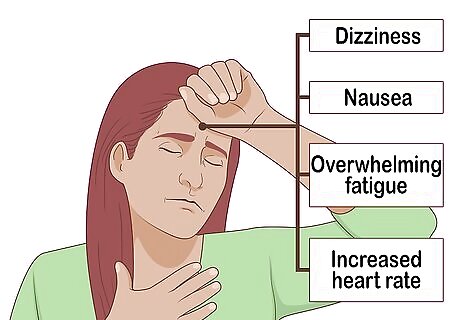
Recognize the symptoms of heat exhaustion. Some of the most common warning signs of heat-related illness include dizziness, nausea, overwhelming fatigue and an accelerated heart rate. If you become aware of any of these warning signs, stop what you’re doing immediately and find someplace to escape the heat. A cool shower (not ice cold—a drastic change of temperature can be a shock to the body) will help return your body to a normal temperature. Heat exhaustion can be fatal when ignored. Practice good judgment and avoid taking unnecessary chances with your wellbeing.



















Comments
0 comment